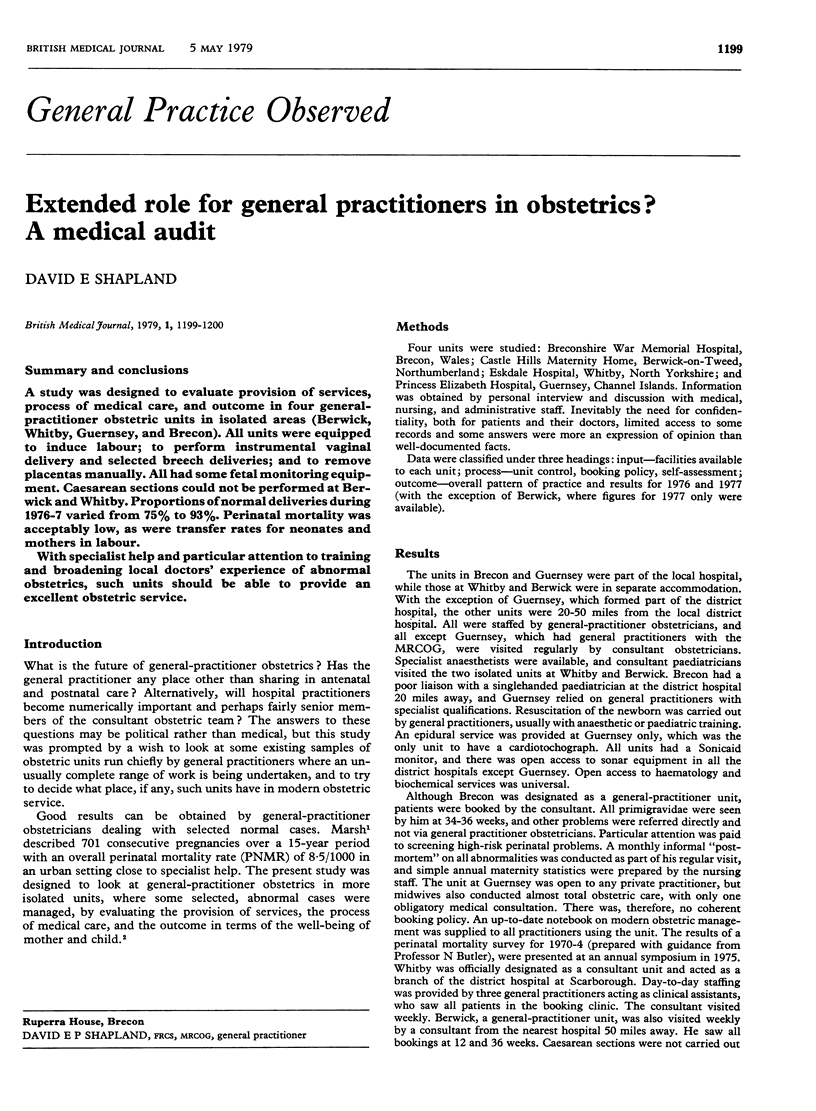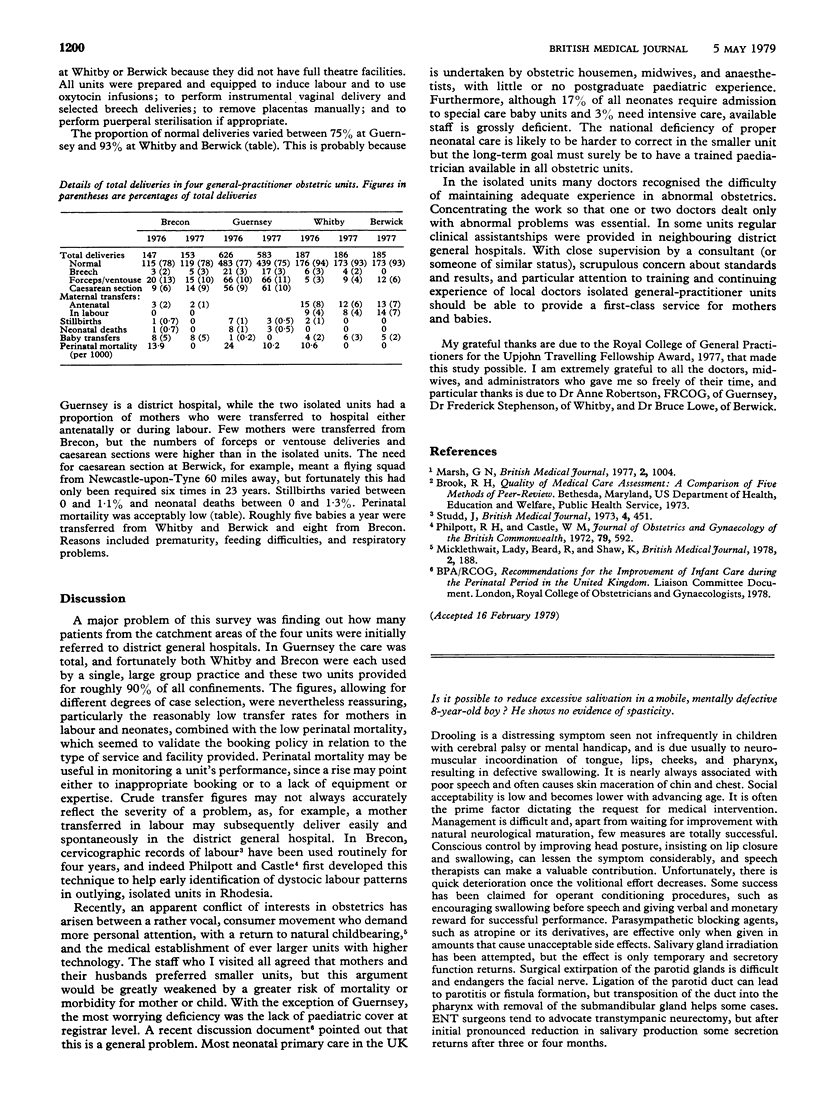Abstract
A study was designed to evaluate provision of services, process of medical care, and outcome in four general-practitioner obstetric units in isolated areas (Berwick, Whitby, Guernsey, and Brecon). All units were equipped to induce labour; to perform instrumental vaginal delivery and selected breech deliveries; and to remove placentas manually. All had some fetal monitoring equipment. Caesarean sections could not be performed at Berwick and Whitby. Proportions of normal deliveries during 1976-7 varied from 75% to 93%. Perinatal mortality was acceptably low, as were transfer rates for neonates and mothers in labour. With specialist help and particular attention to training and broadening local doctors' experience of abnormal obstetrics, such units should be able to provide an excellent obstetric service.
Full text
PDF

Selected References
These references are in PubMed. This may not be the complete list of references from this article.
- Marsh G. N. Obstetric audit in general practice. Br Med J. 1977 Oct 15;2(6093):1004–1006. doi: 10.1136/bmj.2.6093.1004. [DOI] [PMC free article] [PubMed] [Google Scholar]
- Micklethwait L., Beard R., Shaw K. Expectations of a pregnant woman in relation to her treatment. Br Med J. 1978 Jul 15;2(6131):188–191. doi: 10.1136/bmj.2.6131.188. [DOI] [PMC free article] [PubMed] [Google Scholar]
- Philpott R. H., Castle W. M. Cervicographs in the management of labour in primigravidae. I. The alert line for detecting abnormal labour. J Obstet Gynaecol Br Commonw. 1972 Jul;79(7):592–598. doi: 10.1111/j.1471-0528.1972.tb14207.x. [DOI] [PubMed] [Google Scholar]
- Studd J. Partograms and nomograms of cervical dilatation in management of primigravid labour. Br Med J. 1973 Nov 24;4(5890):451–455. doi: 10.1136/bmj.4.5890.451. [DOI] [PMC free article] [PubMed] [Google Scholar]


